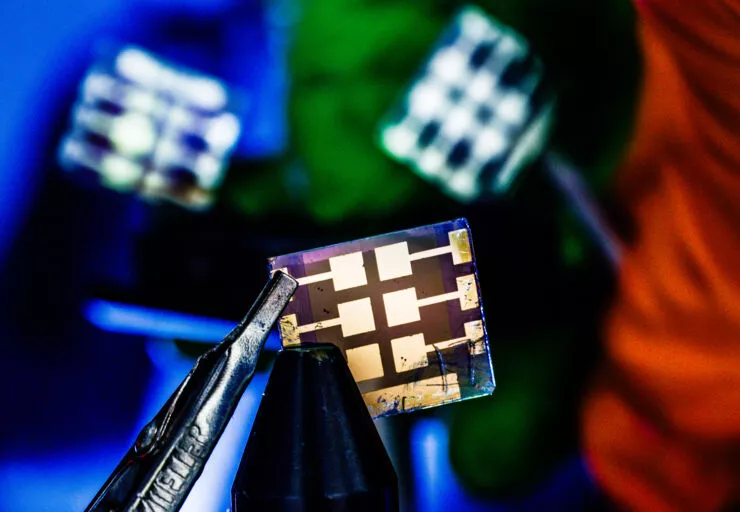Researchers at Linköping University in Sweden have introduced a next-generation LED perovskite digital display technology that could redefine the landscape of personal electronic devices.
The cutting-edge digital display screen not only showcases visual content but also intelligently reacts to touch, light, fingerprints, and even the user’s pulse, foretelling a new era for devices such as smartphones, computers, and tablets.
In a paper published in Nature Electronics, researchers detailed how they created the novel multifunctional display by leveraging the unique properties of photo-responsive metal halide perovskite LEDs as pixels.
“Our results show that there is great potential for a new generation of digital displays where new advanced features can be created,” Dr. Feng Gao, a professor of optoelectronics at Linköping University (LiU) and study co-author, said. “From now on, it’s about improving the technology into a commercially viable product.”
The advent of touch-screen technology revolutionized how the world interacts with digital devices, making them more intuitive and accessible. From the first smartphones to the latest smart home devices, touch screens have become indispensable to modern life.
Most LCD and OLED screens are limited to merely displaying information. For these displays to acquire multifunctional capabilities, including functioning as a touch-screen or identifying fingerprints, an array of sensors must be integrated directly into the screen or embedded around its periphery.
However, the researchers at LiU have taken the potential of touch-screen technology a step further by eliminating the need for additional sensors, allowing the screen to provide a multitude of features.
Researchers say the perovskite digital display in this new design can sense touch, light changes, and biometric data, integrating sensing capabilities directly into the screen.
The innovative LEDs are made from a crystal-like material called halide perovskite. While the term “perovskite” technically describes an oxide mineral made of calcium titanate from the Earth’s mantle, it is also used to denote a particular group of light-sensitive semiconductors. These semiconductors share a crystalline structure reminiscent of the naturally found mineral. Hence, the name “perovskite” is used as a nickname for this class of materials.
Halide perovskite is renowned for its superior light absorption and emission capabilities. In recent years, the material has been used as a high-performance and low-cost solution for developing solar cells.
Similarly, the use of halide perovskite in these new digital displays not only enhances the screen’s responsiveness and reduces costs compared to conventional LEDs but also allows the displays to function as solar cells. For instance, devices equipped with this technology could harvest light to recharge their battery when not in use, significantly extending battery life.
“Here’s an example – your smartwatch screen is off most of the time,” Chunxiong Bao, an associate professor at Nanjing University and study co-author, explained. “During the off-time of the screen, instead of displaying information, it can harvest light to charge your watch, significantly extending how long you can go between charges.”
However, transitioning from a promising prototype perovskite digital display to a commercially viable product is not without challenges. One of the main hurdles is enhancing the longevity of the perovskite LEDs. Currently, the screen’s operational life is limited to a few hours before the material becomes unstable. Dr. Zhongcheng Yuan, a researcher at the University of Oxford and study co-author, said he is optimistic that these obstacles will be overcome within the next 10 years, paving the way for widespread adoption of this technology.
As the research team continues to refine this technology, the implications for the consumer electronics industry are vast. The innovation could lead to ultra-thin and lightweight digital displays that are more intuitive, responsive, and sustainable, leveraging natural light to extend battery life.
“The high photoresponsivity of the pixels makes the display screen a potential platform for human-machine interactions. For example, we show that the screens can be used as a scanner, a PPG sensor, and to charge a supercapacitor,” researchers wrote. “Our results illustrate the unique advantages of PeLEDs for display applications and offer a promising route for the development of ultra-thin, multifunctional displays.”
Tim McMillan is a retired law enforcement executive, investigative reporter and co-founder of The Debrief. His writing typically focuses on defense, national security, the Intelligence Community and topics related to psychology. You can follow Tim on Twitter: @LtTimMcMillan. Tim can be reached by email: tim@thedebrief.org or through encrypted email: LtTimMcMillan@protonmail.com

